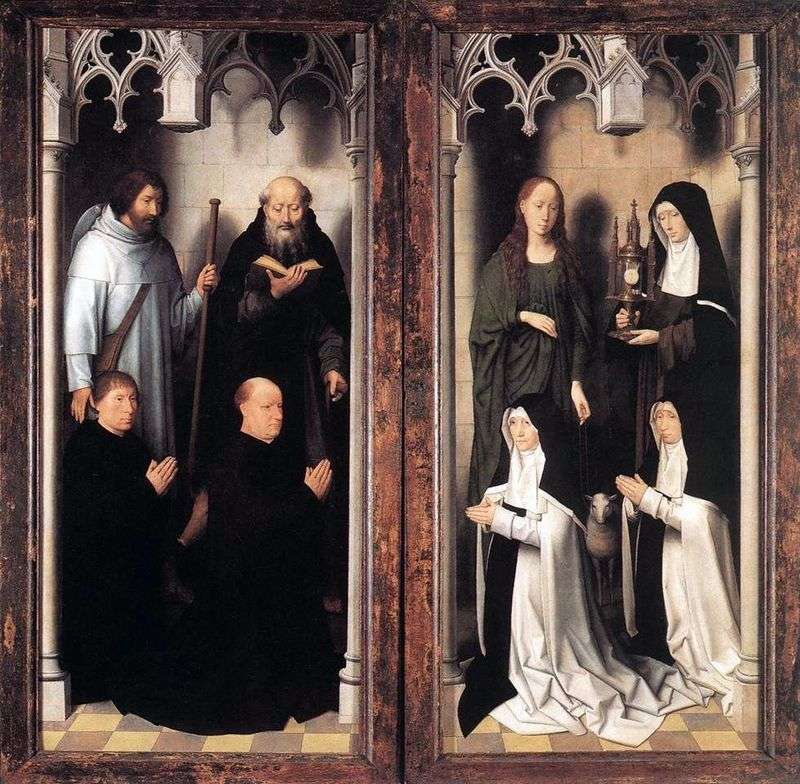
On the outer sides of the triptych wings are kneeling donators with their patron saints. On the left casement is the abbot Anthony Seghers and treasurer Jakob de Kenink, on the right case the abbess Agnes Casembroth and treasurer Klara van Hulzen.
These characters correspond to four figures on the central part of the triptych: two John and St. Catherine and Barbara; moreover, Catherine symbolizes the community of nuns, the bride of Christ, and Barbara – the saint, who was called upon in prayers to help the seriously ill, suffering, or dying Christian. The interweaving of illusion and reality is also clearly visible in the way Memling conceived the outer side of the altar. Recall that earlier all the works on the back of the valves were performed in the technique of grisaille.
The figures seem alive, and as such they are not inferior to the images on the inside. Memling breaks with the tradition of the “dead” back wall and thereby proclaims its end. The picture ceases to be a utilitarian part of the church situation, but becomes an optical screen, a door to a new space on each side. Although donators are present, they kneel not in front of the main stage. It can be stated with all certainty that the work of Hans Memling belongs to a completely different category than the works of his famous compatriots – van der Goes and Bruegel, who could interpret the plot in a purely “human” dimension. But it was he who was the first to successfully embody the “platonic” aspect in painting north of the Alps, just at that time, when artists from Pisanello to Raphael tried to get the same result in a completely different way during the period of the Italian Quattro. Memling creates a mystical space in which not only illusion and reality interact, but also heaven and earth.
Christian mythology unfolds into a picture that is not inferior in brightness to the images of antiquity. Image and tradition go hand in hand in a single concept, preserved in history and time, clearly defining the role of painting as a pure image and in this sense reflecting ideal reality.
